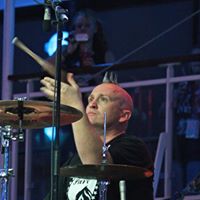David W Beach
age ~70
from Mechanicsburg, PA
- Also known as:
-
- David Wayne Beach
- David B Beach
- David W Bk
David Beach Phones & Addresses
- Mechanicsburg, PA
- Fort Worth, TX
- Clearville, PA
- Havre de Grace, MD
- Perry Point, MD
- Schnecksville, PA
- York, PA
- Fort Leavenworth, KS
- Columbia, PA
Ranks
-
Licence:Virginia - Authorized to practice law
-
Date:1976
Isbn (Books And Publications)






The New American City Faces Its Regional Future: A Cleveland Perspective
view sourceAuthor
David Beach
ISBN #
0821412787


License Records
David W Beach
License #:
9343 - Expired
Issued Date:
May 1, 1959
Expiration Date:
Jun 30, 1996
Type:
Mechanical Engineer
Name / Title
Company / Classification
Phones & Addresses
Group Production Manager
Nbi & Associate
Insurance Companies
Insurance Companies
1200 W Fwy STE 301, Fort Worth, TX 76102
(817)3398977, (817)8785780
(817)3398977, (817)8785780
GREATER OHIO POLICY CENTER, INC
JOHNSTON BEACH LIMITED
ELS PROPERTIES LLC
NORTH COAST EXCAVATING & CONTRACTING, LLC
Principal
United States Department of Veterans Affairs
Administrative Veterans' Affairs · Medical Doctor's Office · Medical Doctor's Office Administrative Veterans' Affairs · Veterans Affairs
Administrative Veterans' Affairs · Medical Doctor's Office · Medical Doctor's Office Administrative Veterans' Affairs · Veterans Affairs
10 N Greene St, Baltimore, MD 21201
31 Hopkins Plz, Baltimore, MD 21201
Perry Point, MD 21902
31 Hopkins Plz, Baltimore, MD 21201
Perry Point, MD 21902
TEAM THUNDER WHEELCHAIR SPORTS
RESERVE IT! DEVELOPMENT INC
Us Patents
-
Cell-Cycle Regulatory Proteins, And Uses Related Thereto
view source -
US Patent:6486131, Nov 26, 2002
-
Filed:Jan 30, 1998
-
Appl. No.:09/016750
-
Inventors:David H. Beach - Huntington Bay NY
Douglas J. Demetrick - E. Northport NY
Manuel Serrano - Mill Neck NY
Gregory J. Hannon - Huntington NY -
Assignee:Cold Spring Harbor Laboratory - Cold Spring Harbor NY
-
International Classification:A61K 3170
-
US Classification:514 44, 424 932, 4353201, 435325, 435455
-
Abstract:The present invention relates to the discovery in eukaryotic cells, particularly mammalian cells, of a novel family of cell-cycle regulatory proteins (âCCR-proteinsâ). As described herein, this family of proteins includes a polypeptide having an apparent molecular weight of 16 kDa, and a polypeptide having an apparent molecular weight of approximately 15 kDa, each of which can function as an inhibitor of cell-cycle progression, and therefore ultimately of cell growth. Thus, similar to the role of p21 to the p53 checkpoint, the subject CCR-proteins may function coordinately with the cell-cycle regulatory protein, retinoblastoma (RB). Furthermore, the CCR-protein family includes a protein having an apparent molecular weight of 13. 5 kDa (hereinafter âp13. 5â). The presumptive role of p13.
-
Cyclin Dependent Kinase Mutants, And Diagnostic And Therapeutic Uses Related Thereto
view source -
US Patent:6566054, May 20, 2003
-
Filed:Aug 30, 1996
-
Appl. No.:08/706322
-
Inventors:David H. Beach - Huntington Bay NY
Manuel Serrano - Mill Neck NY -
Assignee:Cold Spring Harbor Laboratory - Cold Spring Harbor NY
-
International Classification:C12Q 168
-
US Classification:435 6, 435 71, 435 772
-
Abstract:The present invention relates to the discovery in eukaryotic cells, particularly mammalian cells, of mutant cyclin dependent kinase (CDK) proteins. These proteins fail to bind to CDK-inhibitory proteins and thus lead to aberrant cell growth. Herein, screening assays are described to identify CDK mutant proteins and the uses of these mutant proteins as tumor vaccines is described.
-
Ubiquitin Ligases And Uses Related Thereto
view source -
US Patent:6503742, Jan 7, 2003
-
Filed:Sep 8, 1999
-
Appl. No.:09/392163
-
Inventors:David Beach - Huntington Bay NY
Maureen G. Caligiuri - Huntington NY
Bradley Nefsky - Highland Park NJ -
Assignee:Cold Spring Harbor Laboratory - Cold Spring Harbor NY
-
International Classification:C12N 1552
-
US Classification:435183, 4353201, 4352523, 435325, 536 232
-
Abstract:The present invention relates to the discovery in eukaryotic cells of a ubiquitin ligases. These proteins are referred to herein collectively as âpubâ proteins for Protein UBiquitin ligase, and individually as h-pub1, h-pub2 and s-pub1 for the human pub1 and pub2 and pub1 clones, respectively. Pub1 proteins apparently play a role in the ubiquitination of the mitotic activating tyrosine phosphatase cdc25, and thus they may regulate the progression of proliferation in eukaryotic cells by activating the cyclin dependent kinase complexes. In disruption of s-pub1 elevates the level of cdc25 protein in vivo increasing the activity of the tyrosine kinases, wee1 and mik1, required to arrest the cell-cycle. Loss of wee1 function in an cell carrying a disruption in the s-pub1 gene results in a lethal premature entry into mitosis; such lethal phenotype can be rescued by the loss of cdc25 function. An ubiquitin thioester adduct of s-pub1 can be isolated from and disruption of s-pub1 dramatically reduces ubiquitination of cdc25.
-
Cdc25 Genes, Encoded Products And Uses Thereof
view source -
US Patent:7005258, Feb 28, 2006
-
Filed:Oct 30, 2000
-
Appl. No.:09/699580
-
Inventors:David H. Beach - Huntington Bay NY, US
Konstantin Galaktionov - Cold Spring Harbor NY, US -
Assignee:The National Institutes of Health - Bethesda MD
-
International Classification:C12Q 1/68
C07H 21/04 -
US Classification:435 6, 536 245
-
Abstract:Two previously undescribed human cdc25 genes, designated cdc25 A and cdc25 B, which have been shown to have an endogenous tyrosine phosphatase activity that can be specifically activated by B-type cyclin, in the complete absence of cdc2 are described. As a result of this work, new approaches to regulating the cell cycle in eukaryotic cells and, particularly, to regulating the activity of tyrosine specific phosphatases which play a key role in the cell cycle are available. Applicant's invention relates to methods of regulating the cell cycle and, specifically, to regulating activation of cdc2-kinase, through alteration of the activity and/or levels of tyrosine phosphatases or through alteration of the interaction of components of MPF. More specifically, the invention relates to inhibiting transcription or translation of mammalian CDC25A genes using oligonucleotides.
-
Antibodies To The Cell Cycle Regulatory Protein P16
view source -
US Patent:7425617, Sep 16, 2008
-
Filed:Jan 30, 1998
-
Appl. No.:09/016869
-
Inventors:David H. Beach - Huntington Bay NY, US
Douglas J. Demetrick - Northport NY, US
Manuel Serrano - Mill Neck NY, US
Gregory J. Hannon - Huntington NY, US -
Assignee:Cold Spring Harbor Laboratory - Cold Spring Harbor NY
-
International Classification:C07K 16/00
-
US Classification:5303871, 5303881, 5303891
-
Abstract:The present invention relates to the discovery in eukaryotic cells, particularly mammalian cells, of a family of cell-cycle regulatory proteins (“CCR-proteins”). As described herein, this family of proteins includes a polypeptide having an apparent molecular weight of 16 kDa, and a polypeptide having an apparent molecular weight of approximately 15 kDa, each of which can function as an inhibitor of cell-cycle progression, and therefore ultimately of cell growth. The present invention comprises antibodies directed to such CCR-proteins.
-
P16Polypeptides
view source -
US Patent:7550561, Jun 23, 2009
-
Filed:Apr 14, 1994
-
Appl. No.:08/227371
-
Inventors:David H. Beach - Huntington Bay NY, US
Douglas J. Demetrick - E. Northport NY, US
Manuel Serrano - Mill Neck NY, US
Gregory J. Hannon - Huntington NY, US -
Assignee:Cold Spring Harbor Laboratory - Cold Spring Harbor NY
-
International Classification:C12Q 1/68
C12P 21/04
C07K 14/435 -
US Classification:530350, 530324, 530352, 530395, 530402, 530403, 435 6, 435 691, 435 697
-
Abstract:The present invention relates to the discovery in eukaryotic cells, particularly human cells, a novel polypeptide of 16 kDa (hereinafter “p16” or “p16”) can function as an inhibitor of cell cycle progression, and therefore ultimately of cell growth, and that similar to the role of p21 and p53, the p16 protein may function coordinately with the cell cycle regulatory protein, retinoblastoma (Rb).
-
Kit For Detecting The Level Of Cyclin-Dependent Kinase Inhibitor P16 Gene Expression
view source -
US Patent:7691632, Apr 6, 2010
-
Filed:Aug 20, 2008
-
Appl. No.:12/195135
-
Inventors:David H. Beach - Huntington Bay NY, US
Douglas J. Demetrick - Northport NY, US
Manuel Serrano - Mill Neck NY, US
Gregory J. Hannon - Huntington NY, US -
Assignee:Cold Spring Harbor Laboratory - Cold Spring Harbor NY
-
International Classification:C07K 16/00
-
US Classification:435810, 5303871
-
Abstract:The present invention relates to the discovery in eukaryotic cells, particularly mammalian cells, of a family of cell-cycle regulatory proteins (“CCR-proteins”). As described herein, this family of proteins includes a polypeptide having an apparent molecular weight of 16 kDa, and a polypeptide having an apparent molecular weight of approximately 15 kDa, each of which can function as an inhibitor of cell-cycle progression, and therefore ultimately of cell growth. The present invention comprises antibodies directed to such CCR-proteins. The present invention is directed to a kit for detecting the level of cyclin-dependent kinase inhibitor p16 gene expression comprising antibodies directed to a p16 protein.
-
Cell-Cycle Regulatory Proteins, And Uses Related Thereto
view source -
US Patent:20030100489, May 29, 2003
-
Filed:Sep 4, 2001
-
Appl. No.:09/947206
-
Inventors:David Beach - Huntington Bay NY, US
Douglas Demetrick - E. Northport NY, US
Manuel Serrano - Mill Neck NY, US
Gregory Hannon - Huntington NY, US -
International Classification:A61K038/55
C12N009/99 -
US Classification:514/012000, 435/184000, 435/069200, 435/320100, 435/325000
-
Abstract:The present invention relates to the discovery in eukaryotic cells, particularly mammalian cells, of a novel family of cell-cycle regulatory proteins (“CCR-proteins”). As described herein, this family of proteins includes a polypeptide having an apparent molecular weight of 16 kDa, and a polypeptide having an apparent molecular weight of approximately 15 kDa, each of which can function as an inhibitor of cell-cycle progression, and therefore ultimately of cell growth. Thus, similar to the role of p21 to the p53 checkpoint, the subject CCR-proteins may function coordinately with the cell-cycle regulatory protein, retinoblastoma (RB). Furthermore, the CCR-protein family includes a protein having an apparent molecular weight of 13.5 kDa (hereinafter “p13.5”). The presumptive role of p13.5, like p16 and p15, is in the regulation of the cell-cycle.
Resumes

David Beach
view sourceLocation:
United States

David Beach
view sourceLocation:
United States

David Beach
view sourceLocation:
United States

David Beach
view sourceLocation:
United States

David Beach
view sourceLocation:
United States

David Beach
view sourceLocation:
United States
Lawyers & Attorneys

David Bernard Beach - Lawyer
view sourceLicenses:
Virginia - Authorized to practice law 1976

David Beach - Lawyer
view sourceOffice:
Bishop | Barry A Professional Corporation
Specialties:
Personal Injury Defense
Insurance Coverage
Professional Liability
Asbestos Litigation
Real Estate
Landlord & Tenant
Construction Litigation
Insurance Coverage
Professional Liability
Asbestos Litigation
Real Estate
Landlord & Tenant
Construction Litigation
ISLN:
909180223
Admitted:
1980
University:
University of California, Berkeley, B.S., 1977
Law School:
University of San Diego, J.D., 1980

David Beach - Lawyer
view sourceSpecialties:
Antitrust
Competition and Trade Regulation
Appellate
Accountant Defense
Litigation
Competition and Trade Regulation
Appellate
Accountant Defense
Litigation
ISLN:
917461932
Admitted:
2003
University:
University of Wisconsin, 1996
Law School:
University of California, Hastings College of the Law, Juris Doctor, 2003

David Beach - Lawyer
view sourceSpecialties:
Business
Personal Injury
Contracts
Estate Planning
Successions
Insurance Defense
Real Estate
Construction Law
Personal Injury
Contracts
Estate Planning
Successions
Insurance Defense
Real Estate
Construction Law
ISLN:
909180209
Admitted:
1985
University:
Northeast Louisiana University, B.A., 1978
Law School:
Southern University, J.D., 1985

David Beach - Lawyer
view sourceISLN:
909180247
Admitted:
1976
University:
Campbell University, B.S., 1969
Law School:
University of Richmond, J.D., 1976

David Beach - Lawyer
view sourceSpecialties:
Criminal Law
Administrative Law
Administrative Law
ISLN:
909180230
Admitted:
1979
University:
Carleton University, B.A., 1974
Law School:
University of Ottawa, LL.B., 1977
Wikipedia References

David Beach (Judge)
Plaxo

David Beach
view sourceAnywhere they will take meEntertainer at Son of a Beach Productions Actor, comedian, juggler, ventriloquist. Host. Been at this game professionally since 1983. You can see a lot of what I do at my website: youregettingsleepy.com... Actor, comedian, juggler, ventriloquist. Host. Been at this game professionally since 1983. You can see a lot of what I do at my website: youregettingsleepy.com
Yes, odd name, but I am also a hypnotist. Would be happy to tell you more. Currently very happy my book has been published, would love to...

David Beach
view source
DAVID BEACH
view sourceConverse Footwear, Inc.

David Beach
view sourceMAVS

David Beach
view sourceowner at Art Department Services

David M. Beach
view source
Gloria David Beach
view source
David Beach
view source
David Paul Beach
view source
Matthew David Beach
view source
Michael David Beach
view source
David John Beach
view source
Michael David Beach
view sourceYoutube
Classmates

David Beach
view sourceSchools:
Palatka High School Palatka FL 1988-1992
Community:
Sharon Hudson, Josh Heath, Garry Smith

David Beach
view sourceSchools:
Window Rock Elementary School Window Rock AZ 2001-2005
Community:
Calvin Footracer, Katherine Deal, Joy Seeman, Melissa Yazzie, Eric Knight, Cal Tsosie

David Beach
view sourceSchools:
Southern Okanagan Secondary School Oliver Saudi Arabia 1971-1975, Boundry Central Secondary High School Midway Saudi Arabia 1972-1975
Community:
Stan New, Joy Gerwing

David Beach
view sourceSchools:
Port Huron Catholic School Port Huron MI 1970-1973
Community:
Kim Vollmar, Bonnie Hallay

David Beach
view sourceSchools:
Mt. Douglas High School Victoria Saudi Arabia 1969-1973
Community:
John Laliotis, John Fawcett, Pamela Kenny, Mary Bertoia, Janet Christensen
Myspace
Flickr
Googleplus

David Beach
Work:
Wal-Mart - Maintenance/stockman (3-7)
Education:
DetourAreaSchools - General
Relationship:
Widowed
About:
I am an easy going guy looking for a relationship.I like photography and bicycling.

David Beach
Education:
Ysgol brynhyfryd

David Beach
Education:
University of Wyoming

David Beach
Work:
Comanche home center - Flooring installer

David Beach
About:
My name is David and I am a Computer Technician. I love to write and just hang out with family. Been through a lot in my life and just want a change.
Tagline:
Computer Technician trying to make his way in this lfie....

David Beach

David Beach

David Beach
Get Report for David W Beach from Mechanicsburg, PA, age ~70




















